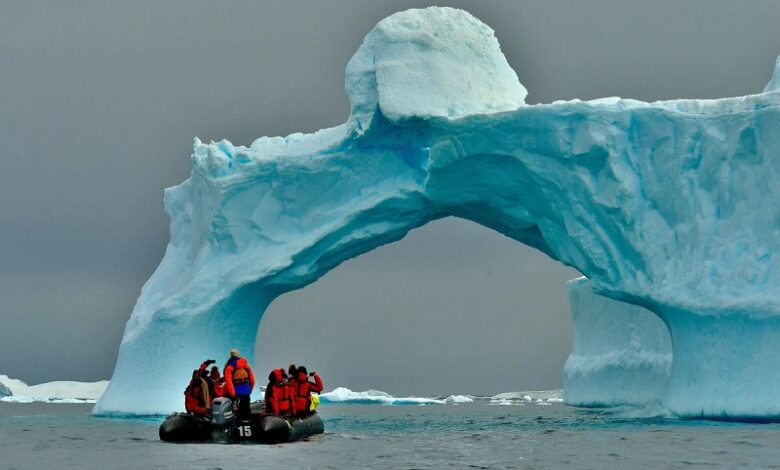Antarctica: A Land of Secrets and Mysteries

News Mania Desk/Agnibeena Ghosh/9th June 2024
Even today, over 250 years since the first documented journey into Antarctic waters, Antarctica remains shrouded in mystery. This unique continent, the southernmost on Earth, is distinguished as the highest, driest, windiest, coldest, and iciest place on the planet. With approximately 98% of its surface covered by thick ice, Antarctica has a rich tapestry of stories hidden beneath its frozen exterior.
Before the first European explorers set sail for Antarctica, there were already whispers of a vast ‘Terra Australis Incognita,’ or unknown land, in the Southern Hemisphere. The ancient Greek philosopher Aristotle, who recognized the Earth as round, hypothesized the existence of a southern landmass to balance the Arctic. Though he never proved it, his theories fueled centuries of speculation. Interestingly, Polynesian oral traditions suggest that Maori explorers might have been the first humans to see Antarctica as early as the 7th century.
For most of the past 100 million years, Antarctica was not the icy expanse we know today. It was a green haven with a tropical climate, home to prehistoric mammals like possums and beavers, as well as lush forests. The supercontinent Gondwana eventually splintered, and a significant part of it drifted south, separating from Australia and New Zealand to form Antarctica. Estimates suggest that the continent has been frozen for only 15 to 34 million years. Fossils of wood, leaves, marine creatures, insects, mollusks, land mammals, and even dinosaurs have been unearthed, revealing its verdant past.
Today, Antarctica is divided by the Transantarctic Mountains into East and West Antarctica. East Antarctica is a high, icy plateau, while West Antarctica is mountainous and bordered by two deep bays. The mostly circular continent surrounds the South Pole but is disrupted by the Antarctic Peninsula, which extends north towards South America. The ice sheet covering the continent holds about 90% of the planet’s glacial ice.
The extreme conditions of Antarctica have resulted in the world’s lowest recorded temperature. On July 21, 1983, at Vostok Station (now in Princess Elizabeth Land), a temperature of -89.2°C (-128.6°F) was documented. These brutal conditions and the continent’s isolation mean there is no native or permanent human population. However, life has adapted to survive here, with more than 800 resilient species of plants and plant-like organisms calling this frozen desert home.
Antarctica is also the world’s largest desert, defined by its low precipitation levels rather than heat or sand dunes. Deserts can be subtropical, coastal, interior, rain shadow, or polar, and all are characterized by arid conditions. While Antarctica supports some hardy plants like lichens, its animal inhabitants—penguins, whales, seals, and seabirds—rely on the ocean for sustenance.
The Antarctic continental glacier, the largest body of ice on Earth, is one of only two ice sheets that survived the last Ice Age, the other being the Greenland ice sheet. Covering more than 5.4 million square miles (14 million square kilometers) and about 1.2 miles (2 kilometers) thick, it includes semi-permanent glacial ice shelves and seasonal ice packs. This dynamic ice pack, constantly melting and freezing, earns Antarctica the nickname “the pulsating continent.”
Captain James Cook, who also mapped Australia, New Zealand, and the Pacific, dedicated three years to searching for Antarctica. On January 17, 1773, he became the first known European to cross the Antarctic Circle, though he never set foot on the continent itself, coming as close as 80 miles (129 kilometers) from its shores. Despite Cook’s belief that no one would surpass his attempt, in 1820, Russian naval officer Fabian von Bellingshausen and British officer Edward Bransfield sighted Antarctic land within days of each other, with von Bellingshausen likely the first. The honor of the first confirmed landing on the continent probably belongs to John Davis, an American ship captain, in 1821.
The Antarctic Treaty, signed by 12 countries in 1961, ensures that the continent is reserved for peaceful, cooperative scientific study. Along with the Madrid Protocol of 1991, it protects the fragile environment, designating Antarctica as a natural reserve. Whaling, which once decimated populations of seals and whales, is now banned, and abandoned whaling stations stand as a testament to past exploitation. Today, the continent’s waters are home to several species of seals and cetaceans, with conservation efforts ongoing.
Antarctica’s allure continues to draw tourists, though visits are heavily regulated to minimize environmental impact. The first tourists to reach the South Pole did so in 1988, and Antarctic tourism has grown significantly since. Despite the challenging journey, including the treacherous Drake Passage, the continent’s unique landscapes and wildlife make it a once-in-a-lifetime destination.






